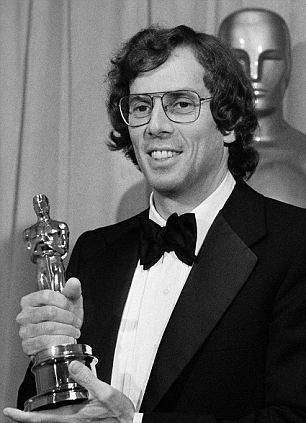Joseph Brooks (Joseph Kaplan)

In the 1960s, Joseph Brooks composed advertising jingles for clients including Pepsi (“You’ve Got a Lot to Live”) and Maxwell House (“Good to the Last Drop Feeling”). He received numerous Clio Awards for his work, as well as a People’s Choice Award. Credited as “Joey Brooks”, he also wrote the song “My Ship Is Comin’ In”, a Top Ten UK hit in 1966 for the Walker Brothers. In the 1970s, Brooks, who had become wealthy from his advertising work (at one point claiming to have 150 commercials on the air), began composing for films. He wrote music for the American release of The Garden of the Finzi-Continis (1970), Marjoe (1972), and The Lords of Flatbush (1974) in which he was also an investor. He wrote “Blue Balloon (The Hourglass Song)” which was sung by Robby Benson as the theme song for the film Jeremy (1973), and further claimed to have written, cast and directed most of Jeremy, although Arthur Barron was the sole writer and director of record. Brooks’ claim was recognized by New York Times film critic Roger Greenspun, who wrote that “it seems fair to suggest that, in whatever proportion, both men were involved in the authorship of the film.” Joseph Brooks next developed his own film project, You Light Up My Life, which he wrote, produced, directed and scored on a budget of approximately $1 million. The romantic drama about an aspiring singer, starring Didi Conn, became a box office success despite poor reviews. The title song Brooks composed for the film was an even bigger success; a cover version by Debby Boone reached #1 on the U.S. Billboard Hot 100 chart and held the top position for 10 consecutive weeks, at that time the longest Number One reign in the chart’s history. With sales of over five million copies, the song ultimately became the biggest hit of the 1970s, and earned Brooks a Grammy Award for Song of the Year, an Academy Award for Best Original Song, a Golden Globe Award and an American Society of Composers, Authors and Publishers (ASCAP) award.
Joseph Brooks attempted to follow up his success with a similar romantic drama, If Ever I See You Again (1978), for which Brooks not only co-wrote, produced, directed and scored, but also played the leading role (a successful composer of TV commercial jingles, much like himself in real life), despite having no significant prior acting experience. Although the title song became a moderate hit for Roberta Flack, peaking at #24 on the Hot 100 chart, the movie received sharply negative reviews and was a box-office bomb. Brooks was subsequently involved in several other films, including directing and scoring Invitation to the Wedding (1983) in which Ralph Richardson and John Gielgud appeared, and co-producing Eddie and the Cruisers (1983) (which Brooks did not score). In the late 1990s, he and his then-wife Christina Bone began developing a film entitled Sara’s Life Before It Became a Movie, which was never released. Joseph Brooks also worked on stage productions, composing and writing for the 1989 West End musical adaptation of Metropolis and writing, directing and producing the Broadway musical In My Life (2005), a love story about a female Village Voice personals editor with obsessive-compulsive disorder and a musician with Tourette’s syndrome who are brought together by a jingle-singing God. Robert Simonson later wrote in Brooks’ Playbill obituary that In My Life was “generally regarded as one of the strangest shows ever to have graced a Broadway stage.” When In My Life was panned by critics including Ben Brantley of The New York Times, who called it “jaw-dropping moments of whimsy run amok”, Brooks spent $1.5 million on ads saying that the critics were wrong. Many sources have described Brooks as an egomaniac. His career was curtailed in 2008 by a stroke.
Police reported that on May 22, 2011, Joseph Brooks was found dead in his Upper East Side condominium apartment by a friend arriving for a lunch date. Brooks was found with a plastic bag over his head near a hose attached to a helium tank, with a suicide note found nearby. According to a law enforcement source, in the note Brooks claimed he would be exonerated of the charges pending against him, but complained about his failing health and a woman who he claimed had abused him and taken his money. Shortly before Brooks’ death, a former friend had also filed suit to seize his condominium to pay off an outstanding $3.2 million debt, alleging that Brooks had put up his longtime home as collateral for a $2.4 million loan in 2006. On May 23, 2011, the medical examiner ruled that Brooks had committed suicide, citing asphyxia by helium.
Born
- March, 11, 1938
- USA
- New York, New York
Died
- May, 22, 2011
- USA
- New York, New York
Cause of Death
- asphyxiation
Cemetery
- Cedar Lawn Cemetery
- East Hampton, New York
- USA



